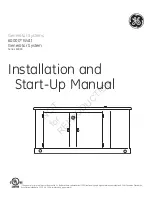
If (Error x Gain) jumps with a value equal to what is set in
par. 20-14
Maximum Reference/Feedb.
the PID controller will try
to change the output speed equal to what is set in
par. 4-13
Motor Speed High Limit [RPM]
/ par. 4-14
Motor Speed
High Limit [Hz]
but in practice of course limited by this setting.
The proportional band (error causing output to change from
0-100%) can be calculated by means of the formula:
(
1
Proportional
Gain
)
× (
Max
Reference
)
NOTE
Always set the desired for par. 20-14
Maximum
Reference/Feedb.
before setting the values for the PID
controller in parameter group 20-9*.
20-94 PID Integral Time
Range:
Function:
20.00
s
*
[0.01 -
10000.00 s]
Over time, the integrator accumulates a
contribution to the output from the PID
controller as long as there is a deviation
between the Reference/Setpoint and
feedback signals. The contribution is propor-
tional to the size of the deviation. This ensures
that the deviation (error) approaches zero.
Quick response on any deviation is obtained
when the integral time is set to a low value.
Setting it too low, however, may cause the
control to become unstable.
The value set, is the time needed for the
integrator to add the same contribution as
the proportional part for a certain deviation.
If the value is set to 10,000, the controller will
act as a pure proportional controller with a P-
band based on the value set in par. 20-93
PID
Proportional Gain
. When no deviation is
present, the output from the proportional
controller will be 0.
22-20 Low Power Auto Set-up
Start of auto set-up of power data for No-Flow Power tuning.
Option:
Function:
[0]
*
Off
[1]
Enabled When set for
Enabled
, an auto set up sequence is
activated, automatically setting speed to approx. 50
and 85% of rated motor speed (par. 4-13
Motor
Speed High Limit [RPM]
, par. 4-14
Motor Speed High
Limit [Hz]
). At those two speeds, the power
consumption is automatically measured and stored.
Before enabling Auto Set Up:
1.
Close valve(s) in order to create a no flow
condition
2.
The frequency converter must be set for
Open Loop (par. 1-00
Configuration Mode
).
Note that it is important also to set
par. 1-03
Torque Characteristics
.
NOTE
Auto Set Up must be done when the system has
reached normal operating temperature!
NOTE
It is important that the par. 4-13
Motor Speed High Limit
[RPM]
or par. 4-14
Motor Speed High Limit [Hz]
is set to
the max. operational speed of the motor!
It is important to do the Auto Set-up before configuring
the integrated PI Contoller as settings will be reset when
changing from Closed to Open Loop in par. 1-00
Config-
uration Mode
.
NOTE
Carry out the tuning with the same settings in
par. 1-03
Torque Characteristics
, as for operation after the
tuning.
22-21 Low Power Detection
Option:
Function:
[0]
*
Disabled
[1]
Enabled
If selecting Enabled, the Low Power Detection
commissioning must be carried out in order to set
the parameters in group 22-3* for proper
operation!
22-22 Low Speed Detection
Option:
Function:
[0]
*
Disabled
[1]
Enabled
Select Enabled for detecting when the motor
operates with a speed as set in par. 4-11
Motor
Speed Low Limit [RPM]
or par. 4-12
Motor Speed Low
Limit [Hz]
.
22-23 No-Flow Function
Common actions for Low Power Detection and Low Speed
Detection (Individual selections not possible).
Option:
Function:
[0]
*
Off
[1]
Sleep Mode The drive will enter Sleep Mode and stop when
a No Flow condition is detected. See parameter
group 22-4* for programming options for Sleep
Mode.
[2]
Warning
The drive will continue to run, but activate a
No-Flow Warning [W92]. A drive digital output
or a serial communication bus can communi-
cate a warning to other equipment.
[3]
Alarm
The drive will stop running and activate a No-
Flow Alarm [A 92]. A drive digital output or a
serial communication bus can communicate an
alarm to other equipment.
How to Programme the Frequ...
VLT
®
HVAC Drive Operating Instructions
MG.11.AD.02 - VLT
®
is a registered Danfoss trademark
89
7
7















































